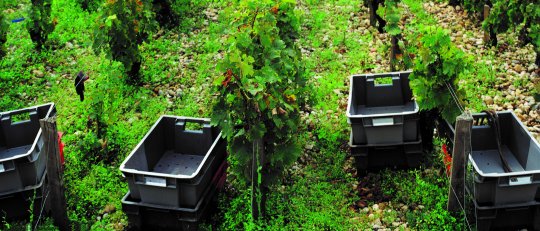-
The grape picker's container: the grapes are first transported by the grape pickers and then brought to the winery by larger machines (trailers, hoppers, or deep trays). These containers must be chosen very carefully. Certain regulations exist concerning these containers, and technical specifications can limit their range of use. This is the case for the Champagne appellation which prohibits the use of non-perforated transport crates. The are many other types of containers that can be used by grape pickers, such as perforated or non-perforated, buckets, or harvesting baskets carried on the back. There are not only different types but also different volumes, ranging from 8 to 20 kg of grapes. The heavier the weight of grapes per container, the greater the risk of crushing. Perforations reduce the damage to the bunches once they have been cut: crushing of the bunches under their own weight causes the release of juices which can then oxidize.
-
The container used for transport to the winery: all of the harvested grapes are then placed on a truck with a trailer or a flatbed when the crates are perforated or non-perforated, and are then transported directly to the winery. Containers such as buckets or harvesting baskets are generally tipped into a hopper or deep tray, which is transported to the winery when full. It should be noted that the accumulation of grapes in a large volume container will cause more crushing, even if the harvesters' have used relatively small containers. Here again, the regulations can be diverse and change depending on the appellation. For example, self-vibrating bins are forbidden in the Saint-Emilion Grand Cru appellation.
3.2.3.b Types of harvest containers
At the Artémis estates, small perforated crates are used for harvest and to transport the grapes. In this way, the bunches' integrity is preserved and the effects of crushing and oxidation due to the weight of the grapes on top of each other are greatly reduced. However, this system requires a significant supply of crates as well as space in the winery and personnel for the cleaning and storage of the empty crates.
In the event of rain when transporting the harvest to the winery, it is possible to use protective tarps to avoid any dilution phenomena. This protection may be compulsory, as is the case in the Burgundy appellation. The flatbed trucks used to transport the crates can be protected with a "cover", as is the case at Château Latour for example.

